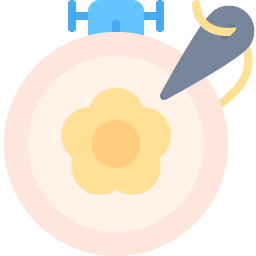Why Crafting is the Perfect Stress Reliever

In today’s fast-paced world, stress has become an unavoidable part of daily life. Between work responsibilities, family obligations, and social pressures, finding an effective way to unwind is essential. One activity that has gained significant attention for its mental health benefits is crafting. From handmade jewelry and knitting to painting and woodworking, crafting provides a unique combination of creativity, focus, and relaxation that makes it an ideal stress reliever.
Engaging the Mind in a Positive Way
Crafting requires concentration, but in a calming manner. When you focus on a project, whether it’s stringing beads for a bracelet or sewing a piece of fabric, your mind shifts away from worries and repetitive stressors. This type of mental engagement is known as “flow,” a state in which people become fully absorbed in an activity. Flow not only helps reduce stress but also promotes feelings of accomplishment and satisfaction. Unlike tasks that feel obligatory, crafting provides purposeful engagement, making it both productive and relaxing.
Physical Benefits of Crafting
Beyond mental relief, crafting can also have subtle physical benefits. Activities like knitting, beading, or painting improve fine motor skills and hand-eye coordination. Repetitive motions, such as threading beads or stitching patterns, can have a soothing effect on the nervous system, similar to meditation or deep breathing exercises. These small physical actions help lower heart rate and reduce muscle tension, contributing to an overall sense of calm.
Boosting Creativity and Self-Expression
Stress often builds when we feel trapped by routines or unable to express ourselves. Crafting offers an outlet for creativity and self-expression, which can be immensely therapeutic. Designing unique accessories, choosing colors, or experimenting with different materials allows you to externalize thoughts and emotions in a tangible way. This process of creation helps release pent-up feelings and encourages a sense of control and accomplishment, which is particularly valuable when life feels overwhelming.
Mindfulness Through Repetition
Many crafting activities involve repetitive actions, such as weaving, beading, or stitching. These repetitive motions encourage mindfulness by keeping your focus on the present moment rather than on past regrets or future worries. This form of mindfulness can lower cortisol levels, reduce anxiety, and improve mental clarity. Unlike other forms of relaxation that require silent meditation, crafting allows you to achieve mindfulness while actively engaging with your hands and creativity.
Building a Sense of Achievement
Completing a craft project, no matter how small, produces a tangible result. This sense of accomplishment can counteract feelings of stress and helplessness. Whether you finish a simple bracelet, a pair of earrings, or a decorative home item, seeing your effort transformed into something beautiful reinforces positive emotions. Crafting not only provides immediate stress relief during the process but also leaves lasting satisfaction after the project is complete.
Connecting with Community
Crafting can also be a social activity. Participating in workshops, joining online crafting groups, or sharing handmade creations with friends fosters connection and reduces feelings of isolation. Social interaction through shared creative experiences has been shown to improve mood, increase motivation, and lower stress levels. Knowing that others appreciate and understand your craft amplifies the mental health benefits of this activity.
A Long-Term Stress Management Tool
Unlike temporary distractions such as scrolling through a phone or watching television, crafting encourages long-term mental wellness. Regular engagement in creative projects can help develop patience, improve focus, and cultivate a habit of mindful relaxation. Over time, crafting can become a reliable tool for managing stress, creating a positive routine that nurtures both the mind and spirit.
